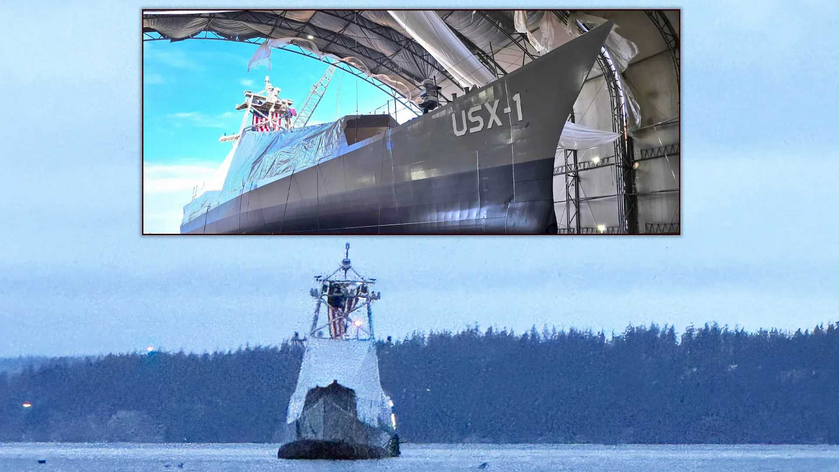A slender, partially covered naval ship that recently emerged in Washington state is the Defiant, a new medium-sized uncrewed surface vessel (USV) designed from the keel up to operate without any humans ever onboard. Developed under the U.S. Defense Advanced Research Projects Agency’s (DARPA) No Manning Required Ship (NOMARS) program, Defiant could be an important stepping stone for the U.S. Navy’s ambitions to add larger and more capable USVs to its fleets.
DARPA confirmed to TWZ that construction of the Defiant, also known by the hull code USX-1, was completed earlier this month. As noted, the first indications that the vessel had been launched came from residents in Washington state who spotted it being pushed by a tug through the Saratoga Passage in Puget Sound north of Seattle. This area of the Sound is also just a few miles from the U.S. Navy’s Naval Air Station (NAS) Whidbey Island. User @IntelWalrus on X was first to bring this to our attention.
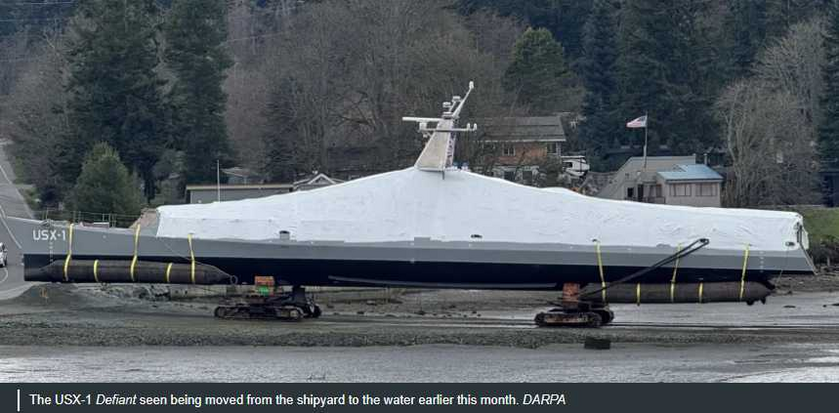
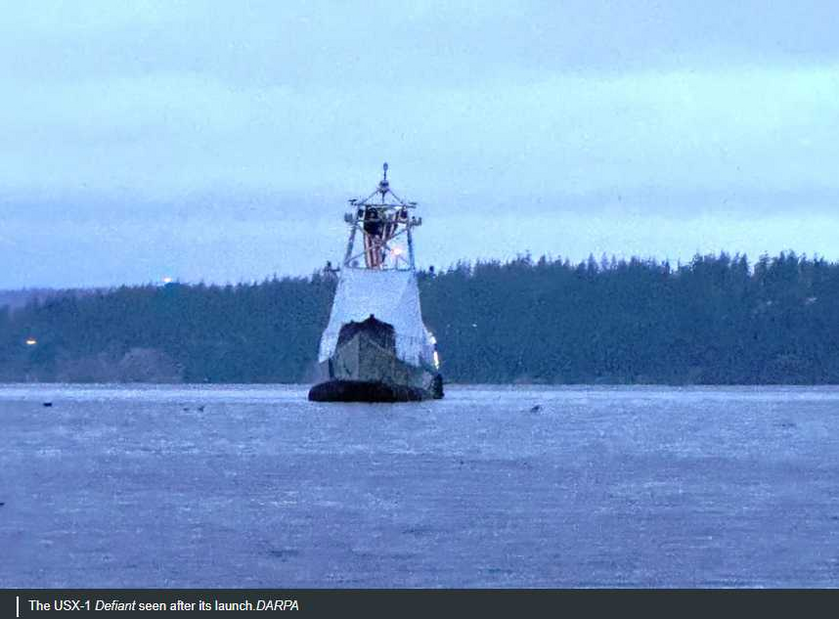
The 180-foot-long, 240-metric ton Defiant is now set to “undergo extensive in-water testing, both dockside and at sea” and “is scheduled to depart for a multi-month at sea demonstration in spring 2025,” according to DARPA. It is unclear where exactly the vessel is currently docked. Serco Inc. is the primary contractor for the USV, which it has been developing since 2020. The company has told TWZ in the past that the core Defiant USV without any add-on mission systems has an approximately $25 million price tag.
The U.S. military has historically categorized uncrewed vessels like Defiant with lengths under 200 feet and displacements under 500 tons but that are larger than ones with speedboat and jetski-type designs, as medium USVs (MUSV). Large USVs (LUSV) have been defined as ones up to 300 feet long and that displace up to 2,000 tons.
A picture of Defiant in the Puget Sound, as well as additional images DARPA has now released, show much of the vessel literally still under wraps. However, the overall hullform, along with the mast at the center sporting various commercial navigation radars and other antennas, is in line with models and computer-generated renders of the design shown in the past. An additional smaller mast with more radars and other antennas is also present on the bow.

Other details about Defiant as it exists now are limited and TWZ has also reached out to Serco for more information. NOMARS program requirements DARPA released in the past called for designs capable of long-duration open-ocean operation with distributed hybrid power generation, podded propulsors, and high-capacity batteries, as well as a high-degree of hydrodynamic efficiency.
The NOMARS program has also put an emphasis on a concept called “graceful degradation” wherein “individual equipment to fail over time by having enough system-level redundancy to meet full system requirements at speeds of at least 15 knots after one year at sea.”
As designed, Defiant has large open spaces on top of its deck in front of and behind its main mast for add-on payloads. Secro has shown models loaded with standard shipping containers, which could hold an array of different mission systems, as well as general cargo. The company has also shown how the USV might be armed using what BAE Systems is now marketing as the Adaptable Deck Launching System (ADL). The ADL is a modular angled launcher designed to fire missiles from the same canisters used with the Mk 41 Vertical Launch System (VLS) found on many U.S. and foreign warships. As such, ADLs can launch a variety of surface-to-air, anti-ship, and land-attack missiles, as well as anti-submarine rockets.
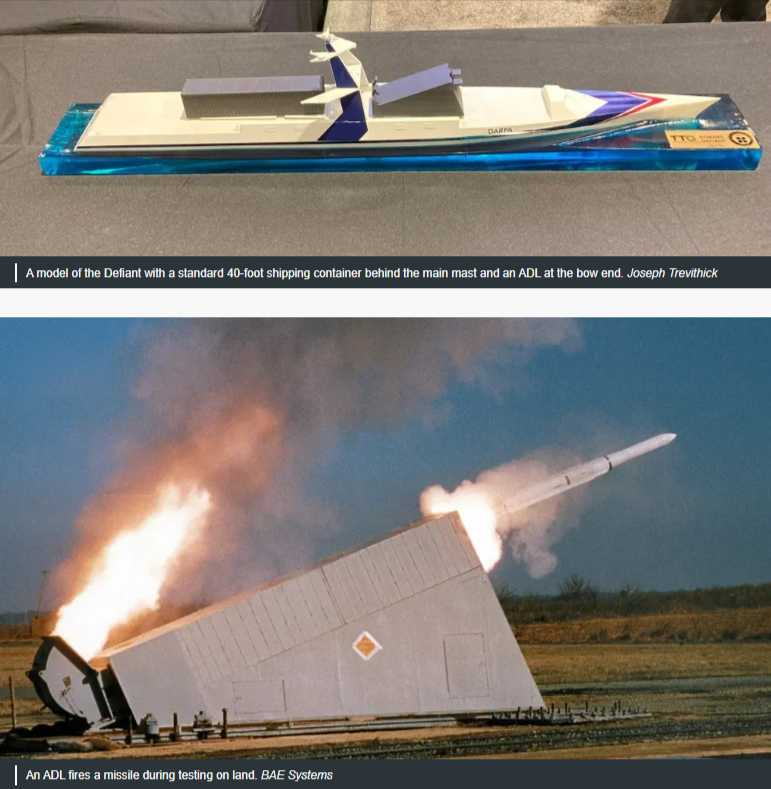
Defiant, at least initially, is intended primarily as a testbed to demonstrate the ability of such a vessel to operate autonomously for extended periods without any humans ever being onboard, even just to monitor systems and provide extra margins of safety.
“The NOMARS program aims to challenge the traditional naval architecture model, designing a seaframe (the ship without mission systems) from the ground up with no provision, allowance, or expectation for humans on board,” DARPA says on its website.
“By removing the human element from all ship design considerations, the program intends to demonstrate significant advantages, to include: size, cost, at-sea reliability, greater hydrodynamic efficiency, survivability to sea-state, and survivability to adversary actions through stealth considerations and tampering resistance.”
Last year, DARPA, in cooperation with the U.S. Navy, conducted a successful test of an at-sea refueling system developed to support the NOMARS mission. Two Navy USVs, the Ranger and the Mariner, which are converted offshore support vessels that retain the ability to operate in crewed mode, were used to demonstrate the refueling system.
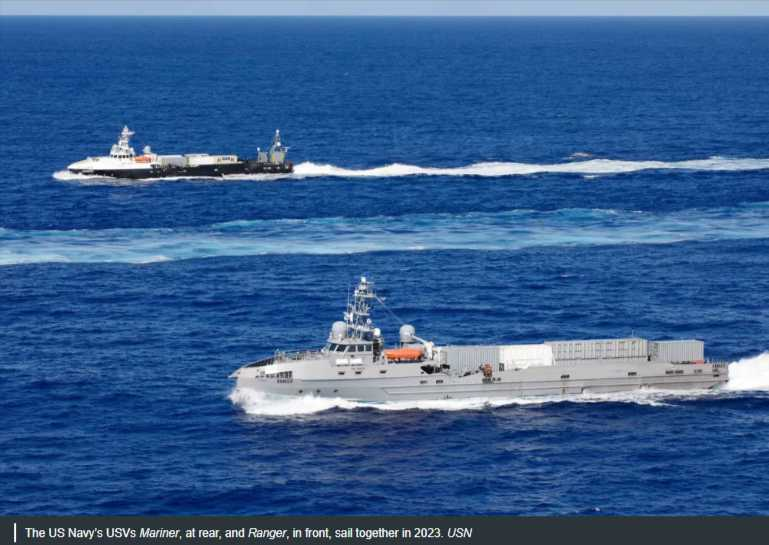
“Fueling at sea (FAS) for USVs presents a problem that needs to be solved as current FAS solutions use personnel to handle lines and hoses on the platform being refueled,” according to a press release DARPA put out in December.
“Requiring personnel on the USV for the operation adds significant constraints on USV design and operations, as the vessel must then be designed with considerations for safety of the humans on board, even if for a short period of time. It can also be risky and sometimes dangerous to transport personnel to a USV in rough seas or high winds.”
“For the recent test, USV Ranger carried a receiving station representative of the system that will be on the NOMARS USV Defiant, and USV Mariner carried a refueling ‘mini-station,’ custom-designed by NOMARS prime contractor Serco Inc,” the release added. “While there were personnel aboard both vessels during the event, no people were involved with operations on the receiving side.”
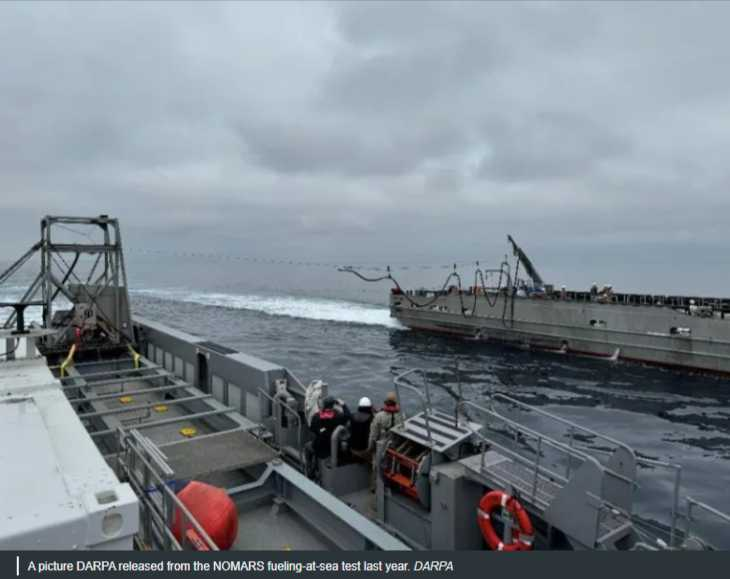 However, Serco has already been actively pitching Defiant as at least a pathway to a range of operational capabilities, including new armed USVs and ones capable of acting as uncrewed logistics platforms. The company has already been working on a larger USV concept called Dauntless leveraging the work done under NOMARS, which could be armed with up to four ADLs, as well as carry other payloads.
However, Serco has already been actively pitching Defiant as at least a pathway to a range of operational capabilities, including new armed USVs and ones capable of acting as uncrewed logistics platforms. The company has already been working on a larger USV concept called Dauntless leveraging the work done under NOMARS, which could be armed with up to four ADLs, as well as carry other payloads.
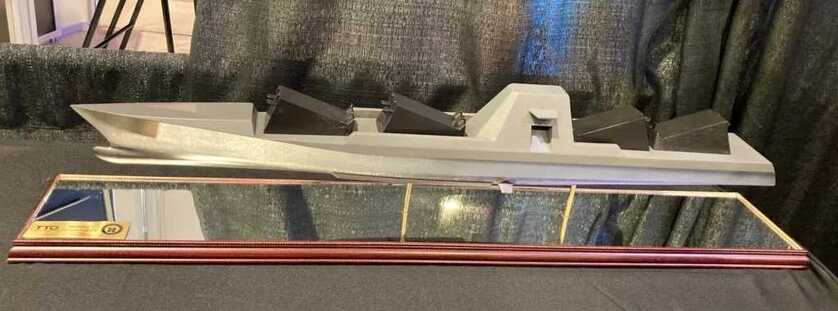
Defiant was also designed with ease of production in mind and Serco has previously told TWZ that the USVs could be produced outside of traditional shipyards, including by railworks, if needed. This could make the design, or future variants or derivatives thereof, very attractive to the U.S. Navy, which has been facing increasingly worrisome struggles to acquire traditional crewed warships. That has come amid broader concerns about U.S. shipyard capacity, or the lack thereof, for building new naval vessels and maintaining existing ones. The U.S. shipbuilding industry continues to be grossly outpaced by that of China, America’s current chief global competitor, despite efforts to narrow the gap in recent years.
Earlier this year, the Navy announced plans to simplify its USV acquisition strategy to focus on smaller, simpler, and more interchangeable designs rather than larger and exquisite ones. The service had previously been working toward fielding distinct fleets of MUSVs and LUSVs.
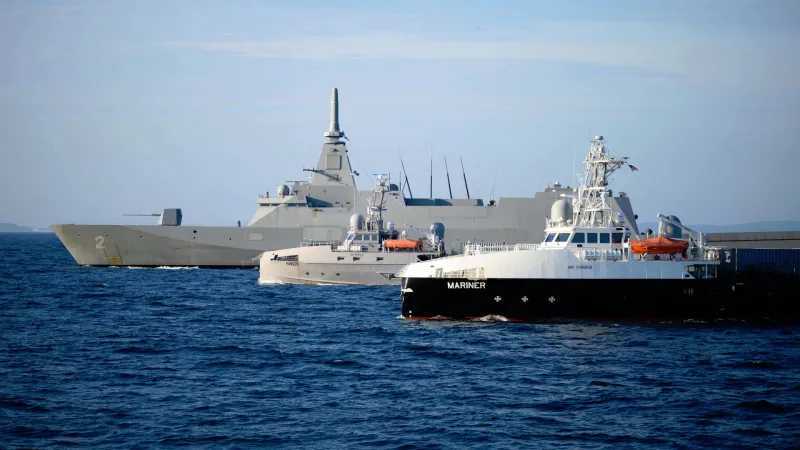
“The designs already exist, and we must not over-spec this,” Rear Adm. William Daly, head of the Navy’s surface warfare division (N96), told an audience, including TWZ, at the Surface Navy Association’s annual symposium in January. “We’ve also had sufficient funding and experimentation to date to know what we need.”
“Many of the payloads are ready and tested. [Concepts of operation] are coalescing,” Daly added. “Let’s move faster. This is efficient, this is effective, and this is scalable.”
DARPA’s NOMARS program, especially now with Defiant about to head off for its first at-sea demonstrations, looks set to be another important part of the U.S. military’s uncrewed naval future.

